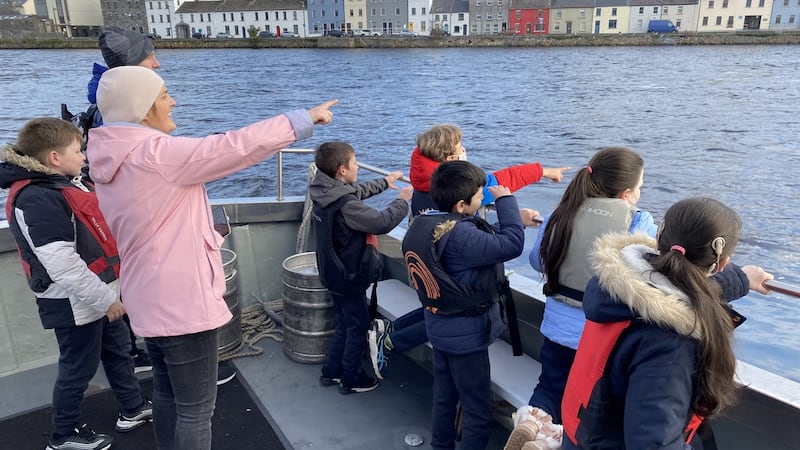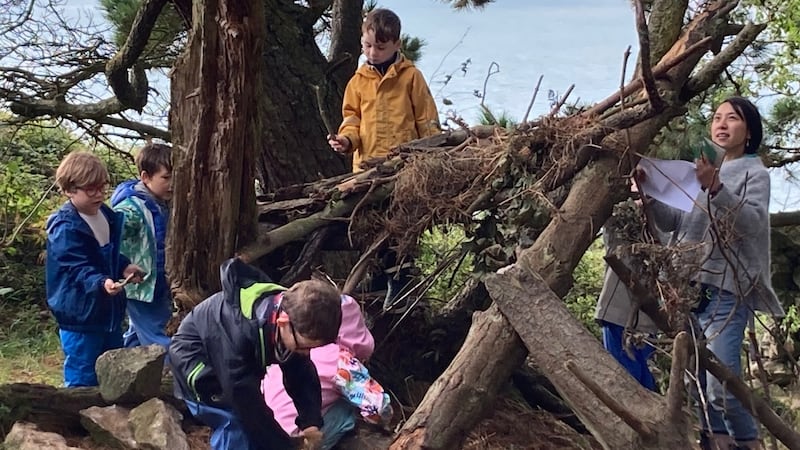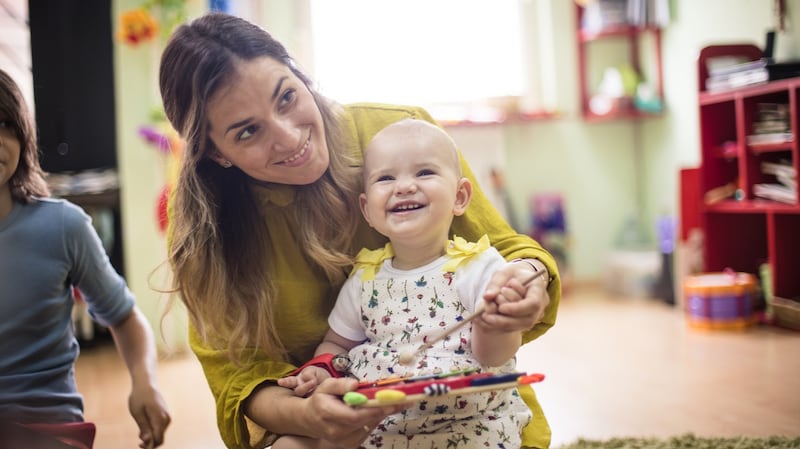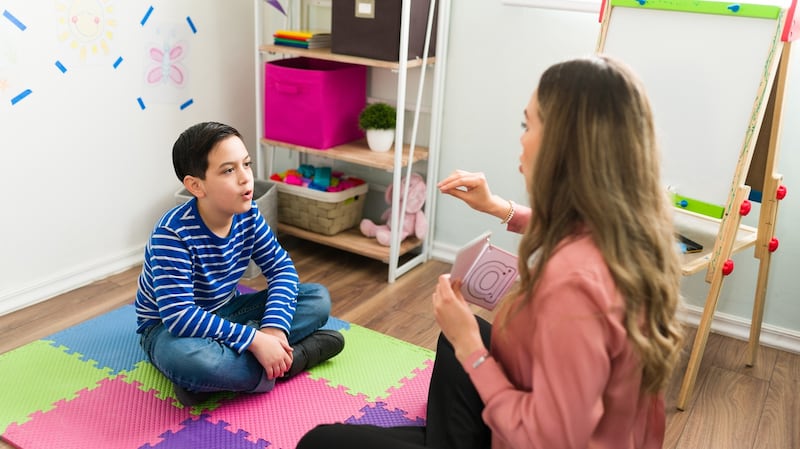Change is slow in Irish education. The Department of Education, irrespective of whatever minister is in charge, is generally more cautious and conservative than other government departments; and teacher unions tend to resist radical change as well.
And yet change – often led by schools and teachers themselves – is happening.
One of the most notable initiatives in Irish education, DCU Changemaker Schools Network, which is run from the university's institute of education, is holding a conference on innovative schools in Ireland on March 24th.
"The pandemic has revealed the fault lines in traditional education systems and created an opportunity to reimagine education for 21st century learning," says Fiona Collins, network co-ordinator of the DCU Changemaker Schools Network.
Collins has been seconded to the DCU School of Policy Practice from her role as principal of Francis Street School, which is part of the network.
“We support schools to network and foster the skills of empathy, creativity, leadership and teamwork,” Collins explains.
“We support teachers and students in areas such as student voice, agency and participation as well as social innovation and active and engaged citizenship to address societal challenges such as inequality, climate change and mental health, assisting teachers and schools too.”
Here, we profile just some of the schools involved in the initiative:

Sea school:
Scoil Bhríde, Shantalla, Galway
During the pandemic, we all sought ways to make the most of the outdoors and, for many of us, that shift has become permanent.
Scoil Bhríde in Shantalla – a Deis school just 15 minutes from the shores of Galway Bay and the docklands in Galway city – set up a “sea school” during the pandemic to ensure the children could avail of the amenities on their doorstep and get outside while still being within their five kilometres.
Students here learn about marine life and conservation, marine biology, rigging and water safety, the effects of climate change and the skills of seafaring, sailing and fishing. They also learn about the history of traditional crafts and how to build a traditional fishing boat and they catch their own fish before cooking and eating it.
It’s a hands-on, experiential approach that touches on areas of the curriculum including science, geography, history, art and maths.
The school has also become a dyslexia-friendly school which focuses on the talents and strengths of the students as well as addresses the emotional complexities of dyslexia, with creativity in all disciplines as well as an emphasis on coding, self-esteem and emotional wellbeing.

Incredible edibles:
Tarmon National School, Co Roscommon
Empathy is one of the core values of the DCU Changemaker initiative, and the school has put inclusion at its core.
"In November 2014 we established our first autism early-intervention class for preschool children, and we now have two early-intervention and four school-age classes," says teacher Louise Redington.
“Inclusion of autism-spectrum pupils with the mainstream is important to us, and the establishment of our autism centre has enhanced the learning experiences, empathy skills and social awareness of each and every member of our school community.”
Student and teacher leadership at the school is fostered with an active student council.
One of the suggestions from the children in the student council – to build an outdoor classroom made of recycled materials – was taken up, increasing the amount of outdoor learning, including growing vegetables in a polytunnel.
Last summer, they were crowned “Incredible Edibles” champion after producing a bumper crop and successfully hatching chickens. As part of all this, the children learn about farm safety.
“The teachers lead by example in how they act, speak and behave, and take on leadership roles in and out of the classroom,” says Redington. “Changemaker schools means we show empathy, creativity, teamwork and leadership in all we do.”

Outdoor education:
Dalkey School Project, Dublin
No stranger to radical change, the school was the first to break the Irish norm of religiously controlled education; school principal Miriam Hurley says they are constantly open to innovation.
“In 2015, one of our teachers brought the idea of a forest school and, because Changemaker schools are open to listening to anyone with a good idea, we took it on.
“We take the children out in all weather bar storms, and our families know to dress them for all weathers. It’s a very structured initiative that involves team games at the start, then free play within boundaries, and relaxation time.
“We’ve had Halloween events, tea ceremonies, storytelling and inspiration from nature drawn from Irish folklore, and teamwork is a vital part of it all. There is huge creativity in it, with children using blackberries to make dye and landscape art, all the while learning about camouflage, sliding, hills and trees. They don’t even notice that they’re learning.”
The school also places an emphasis on empathy, using restorative practices as part of its anti-bullying programme. This involves a teacher listening to both children in a dispute before bringing them together to hear each other.
“Getting to know other Changemaker schools has been inspirational,” says Hurley. “While it can be a challenge to operate in an under-resourced education system, it is affirming to see children growing into critical thinkers and problem-solvers.”

Young 'Dragons' Den':
Our Lady’s and St Mochua’s, Armagh
The only Northern Irish school in the DCU Changemaker initiative, this school places an emphasis on entrepreneurship.
"For us, it means being open-minded and willing to embrace change," says principal Gary Farrell.
“Every year the primary seven [
But, ultimately, Farrell says, DCU Changemakers means that every child takes on leadership roles, whether on their eco-committee or the pupil leadership team.
They have adopted Roots of Empathy, an internationally acclaimed programme which sees children get to know a newborn baby whose parent brings them to the school over the course of a year and which has been proven to build up empathy.
“Creativity is key too, and we’ve developed this in our children through digital storytelling and animation,” says Farrell. “Ultimately, all of these skills are what children need for adulthood.”

Integrated social care:
St Ultan’s, Cherry Orchard, Dublin
Opening in 2006, St Ultan’s is a one-of-a-kind education and social care campus.
"We've developed a system of integrated care and education through which our eclectic team – which includes teachers, special-needs assistants, social care workers, early-years practitioners, therapeutic staff and a wide range of service providers from each part of our campus – meet to discuss the needs of our children and collaborate on which responses we can offer," says Gary Jones, school principal and campus manager.
“This is not the typical way of working in Irish schools or youth services but the benefits greatly outweigh the challenges of developing a new model of working.
“Most children arrive as infants and we get to know them and their families and provide the supports they need to flourish as they grow into toddlers and transition across the hall to the primary school. No child here needs to be hungry or lacking in confidence, and we cook meals on site as well as offer a range of additional activities including sport and music.”
Junk art:
Ballymoney NS, Co Cork
Despite its small size, this two-teacher school in west Cork has big ambitions when it comes to creative projects.
The two classrooms much of spent the school year separated from each other due to Covid-19 restrictions.
However, the school staff came up with an innovative project that would allow the students to work together while staying apart – a mural of plastic bottletops.
Pupils, staff and the wider community collected some 12,000 bottle tops to create a mural of their community which stands at 24ft by eight feet.
The mural shows the view from the playground of Ballineen Bridge with Enniskeane village and Ballineen village on either side. It features some of the wildlife in the area such as herons and swans.
This mural, which turned rubbish into art, shows how a project can evolve even during lockdowns and how to be creative during a time of great challenge in schools.












